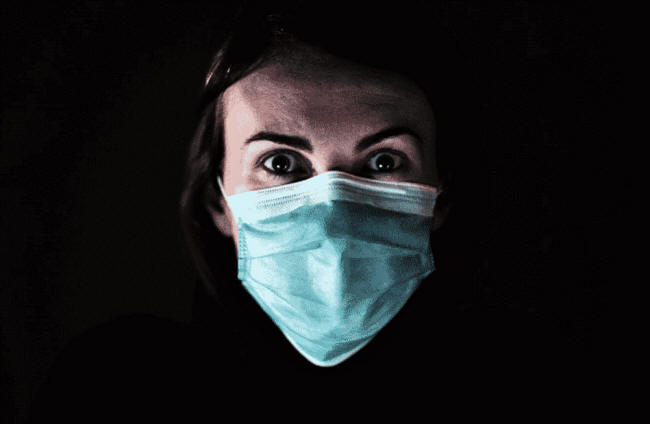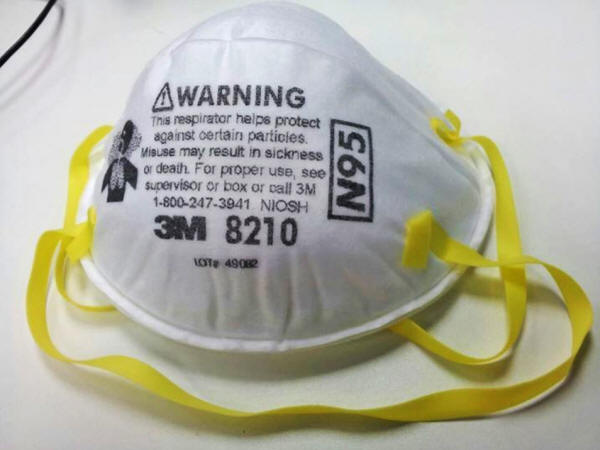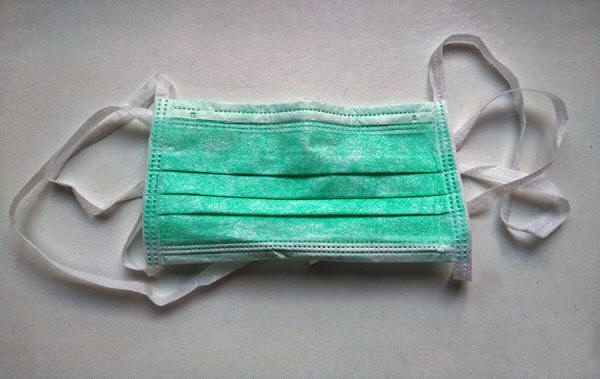|

by Russell Blaylock, MD
May 11,
2020
from
Technocracy Website
Spanish version
Italian version
|
Dr.
Russell Blaylock, author of
The Blaylock Wellness Report
newsletter, is a nationally recognized board-certified
neurosurgeon, health practitioner, author, and lecturer.
He
attended the Louisiana State University School of
Medicine and completed his internship and neurological
residency at the Medical University of South Carolina.
For
26 years, practiced neurosurgery in addition to having a
nutritional practice. He recently retired from his
neurosurgical duties to devote his full attention to
nutritional research.
Dr.
Blaylock has authored four books,
Excitotoxins: The Taste That Kills, Health and Nutrition
Secrets That Can Save Your Life, Natural Strategies for
Cancer Patients, and his most recent work,
Cellular and Molecular Biology of Autism Spectrum
Disorders. |

credit: engin akyurt on Unsplash
Dr. Russell Blaylock warns that not only do face
masks fail to protect the healthy from getting sick,
but they also create serious health risks to the
wearer.
The bottom line is that if you are not sick, you
should not wear a face mask.
As businesses reopen, many are requiring shoppers
and employees to wear a face mask.
Costco, for instance, will not allow shoppers into
the store without wearing a face mask.
Many employers are requiring all employees to wear a
face mask while at work.
In some jurisdictions, all
citizens must wear a face mask if they are outside
of their own home.
With the advent of the
so-called
COVID-19 pandemic, we have seen a number of medical
practices that have little or no scientific support as regards
reducing the spread of this infection.
One of these measures is
the wearing of facial masks, either a surgical-type mask, bandana or
N95 respiratory mask.
When this pandemic began and we knew little
about the virus itself or its epidemiologic behavior, it was assumed
that it would behave, in terms of spread among communities, like
other respiratory viruses.
Little has presented
itself after intense study of this virus and its behavior to change
this perception.
This is somewhat of an unusual virus in that for the vast majority
of people infected by the virus, one experiences either no illness
(asymptomatic) or very little sickness.
Only a very small number
of people are at risk of a potentially serious outcome from the
infection, mainly those with,
underlying serious medical conditions
in conjunction with advanced age and frailty, those with immune
compromising conditions and nursing home patients near the end of
their lives...
There is growing evidence
that the treatment protocol issued to treating doctors by the
Center for Disease Control and Prevention (CDC), mainly
intubation and use of a ventilator (respirator), may have
contributed significantly to the high death rate in these select
individuals.
By wearing a mask,
the exhaled viruses will not be able to escape and will
concentrate in the nasal passages, enter the olfactory nerves
and travel into the brain.
Russell
Blaylock, MD
As for the scientific
support for the use of face mask, a recent careful examination of
the literature, in which 17 of the best studies were analyzed,
concluded that,
"None of the studies
established a conclusive relationship between mask/respirator
use and protection against influenza infection." 1
Keep in mind, no studies
have been done to demonstrate that either a cloth mask or the
N95
mask has any effect on transmission of the COVID-19 virus.
Any recommendations,
therefore, have to be based on studies of influenza virus
transmission. And, as you have seen, there is no conclusive evidence
of their efficiency in controlling flu virus transmission.
It is also instructive to know that until recently, the CDC did not
recommend wearing a face mask or covering of any kind, unless a
person was known to be infected, that is, until recently.
Non-infected people
need not wear a mask...
When a person has TB we
have them wear a mask, not the entire community of non-infected.
The recommendations by
the CDC and
the WHO are not based on any studies of this virus and
have never been used to contain any other virus pandemic or epidemic
in history.
Now that we have established that there is no scientific evidence
necessitating the wearing of a face mask for prevention,
are there dangers to
wearing a face mask, especially for long periods?
Several studies have
indeed found significant problems with wearing such a mask.
This can vary from
headaches, to increased airway resistance, carbon dioxide
accumulation, to
hypoxia, all the way to serious life-threatening
complications.
There is a difference between the
N95 respirator mask and the
surgical mask (cloth or paper mask) in terms of side effects.

The
N95 mask, which
filters out 95% of particles with a median diameter >0.3 µm2,
because it impairs respiratory exchange (breathing) to a greater
degree than a soft mask, and is more often associated with
headaches.
In one such study,
researchers surveyed 212 healthcare workers (47 males and 165
females) asking about presence of headaches with N95 mask use,
duration of the headaches, type of headaches and if the person had
preexisting headaches. 2
They found that about a third of the workers developed headaches
with use of the mask, most had preexisting headaches that were
worsened by the mask wearing, and 60% required pain medications for
relief.
As to the cause of the
headaches, while straps and pressure from the mask could be
causative, the bulk of the evidence points toward hypoxia and/or
hypercapnia as the cause.
That is, a reduction in
blood oxygenation (hypoxia) or an elevation in blood CO2
(hypercapnia).
It is known that the N95
mask, if worn for hours, can reduce blood oxygenation as much as
20%, which can lead to a loss of consciousness, as happened to the
hapless fellow driving around alone in his car wearing an N95 mask,
causing him to pass out, and to crash his car and sustain injuries.
I am sure that we have
several cases of elderly individuals or any person with poor lung
function passing out, hitting their head.
This, of course, can lead
to death...
A more recent study involving 159 healthcare workers aged 21 to 35
years of age found that 81% developed headaches from wearing a face
mask. 3
Some had pre-existing
headaches that were precipitated by the masks. All felt like the
headaches affected their work performance.
Unfortunately, no one is telling the frail elderly and those with
lung diseases, such as
COPD, emphysema or pulmonary fibrosis, of
these dangers when wearing a facial mask of any kind - which can
cause a severe worsening of lung function.
This also includes lung
cancer patients and people having had lung surgery, especially with
partial resection or even the removal of a whole lung.
While most agree that the N95 mask can cause significant hypoxia and
hypercapnia, another study of
surgical masks found significant
reductions in blood oxygen as well.

In this study,
researchers examined the blood oxygen levels in 53 surgeons using an
oximeter. They measured blood oxygenation before surgery as well as
at the end of surgeries. 4
The researchers found
that the mask reduced the blood oxygen levels (pa02) significantly.
The longer the duration of wearing the mask, the greater the fall in
blood oxygen levels.
The importance of these findings is that a drop in oxygen levels
(hypoxia) is associated with an impairment in immunity. Studies have
shown that hypoxia can inhibit the type of main immune cells used to
fight viral infections called the
CD4+ T-lymphocyte.
This occurs because the
hypoxia increases the level of a compound called hypoxia inducible
factor-1 (HIF-1), which inhibits
T-lymphocytes and stimulates a
powerful immune inhibitor cell called the Tregs.
This sets the stage for
contracting any infection, including COVID-19 and making the
consequences of that infection much graver. In essence, your mask
may very well put you at an increased risk of infections and if so,
having a much worse outcome. 5,6,7
People with cancer, especially if the cancer has spread, will be at
a further risk from prolonged hypoxia as the cancer grows best in a
microenvironment that is low in oxygen. Low oxygen also promotes
inflammation which can promote the growth, invasion and spread of
cancers. 8,9
Repeated episodes of
hypoxia has been proposed as a significant factor in atherosclerosis
and hence increases all cardiovascular (heart attacks) and
cerebrovascular (strokes) diseases. 10
There is another danger to wearing these masks on a daily basis,
especially if worn for several hours.
When a person is infected with
a respiratory virus, they will expel some of the virus with each
breath.
If they are wearing a
mask, especially an N95 mask or other tightly fitting mask, they
will be constantly rebreathing the viruses, raising the
concentration of the virus in the lungs and the nasal passages.
We know that people who
have the worst reactions to
the coronavirus have the highest
concentrations of the virus early on. And this leads to the deadly
cytokine storm in a selected number.
It gets even more frightening.
Newer evidence suggests that in some
cases the virus can enter the brain. 11,12
In most instances it
enters the brain by way of the olfactory nerves (smell nerves),
which connect directly with the area of the brain dealing with
recent memory and memory consolidation.
By wearing a mask, the
exhaled viruses will not be able to escape and will concentrate in
the nasal passages, enter the olfactory nerves and travel into the
brain. 13
It is evident from this review that
there is insufficient evidence
that wearing a mask of any kind can have a significant impact in
preventing the spread of this virus.
The fact that this virus
is a relatively benign infection for the vast majority of the
population and that most of the at-risk group also survive, from an
infectious disease and epidemiological standpoint, by letting the
virus spread through the healthier population we will reach a
herd
immunity level rather quickly that will end this pandemic quickly
and prevent a return next winter.
During this time, we need
to protect the at-risk population by avoiding close contact,
boosting their immunity with compounds that boost cellular immunity
and in general, care for them.
One should not attack and insult those who have chosen not to wear a
mask, as these studies suggest that is the wise choice to make...
Video
The
purpose of the mask is that, if the wearer has the
virus and is a carrier, the mask protects others
from that carrier.
The
person infected wearing a mask coughs, splutters,
sneezes into the mask which captures most of virus
and reduces its spread to other people.
Hospital staff have traditionally worn masks to
protect patients, who may have a poor immune system,
from any illness that the doctor/nurse may be
carrying.
All of this has been known for decades...
Source
References
-
bin-Reza F et al.
The use of mask and respirators to prevent transmission of
influenza: A systematic review of the scientific evidence.
Resp Viruses 2012;6(4):257-67.
-
Zhu JH et al.
Effects of long-duration wearing of N95 respirator and
surgical facemask: a pilot study. J Lung Pulm Resp Res
2014:4:97-100.
-
Ong JJY et al.
Headaches associated with personal protective equipment- A
cross-sectional study among frontline healthcare workers
during COVID-19. Headache 2020;60(5):864-877.
-
Bader A et al.
Preliminary report on surgical mask induced deoxygenation
during major surgery. Neurocirugia 2008;19:12-126.
-
Shehade H et al.
Cutting edge: Hypoxia-Inducible Factor-1 negatively
regulates Th1 function. J Immunol 2015;195:1372-1376.
-
Westendorf AM et
al. Hypoxia enhances immunosuppression by inhibiting CD4+
effector T cell function and promoting Treg activity. Cell
Physiol Biochem 2017;41:1271-84.
-
Sceneay J et al.
Hypoxia-driven immunosuppression contributes to the
pre-metastatic niche. Oncoimmunology 2013;2:1 e22355.
-
Blaylock RL.
Immunoexcitatory mechanisms in glioma proliferation,
invasion and occasional metastasis. Surg Neurol Inter
2013;4:15.
-
Aggarwal BB.
Nucler factor-kappaB: The enemy within. Cancer Cell
2004;6:203-208.
-
Savransky V et
al. Chronic intermittent hypoxia induces atherosclerosis. Am
J Resp Crit Care Med 2007;175:1290-1297.
-
Baig AM et al.
Evidence of the COVID-19 virus targeting the CNS: Tissue
distribution, host-virus interaction, and proposed
neurotropic mechanisms. ACS Chem Neurosci 2020;11:7:995-998.
-
Wu Y et al.
Nervous system involvement after infection with COVID-19 and
other coronaviruses. Brain Behavior, and Immunity, In press.
-
Perlman S et al.
Spread of a neurotropic murine coronavirus into the CNS via
the trigeminal and olfactory nerves. Virology
1989;170:556-560.
| 


